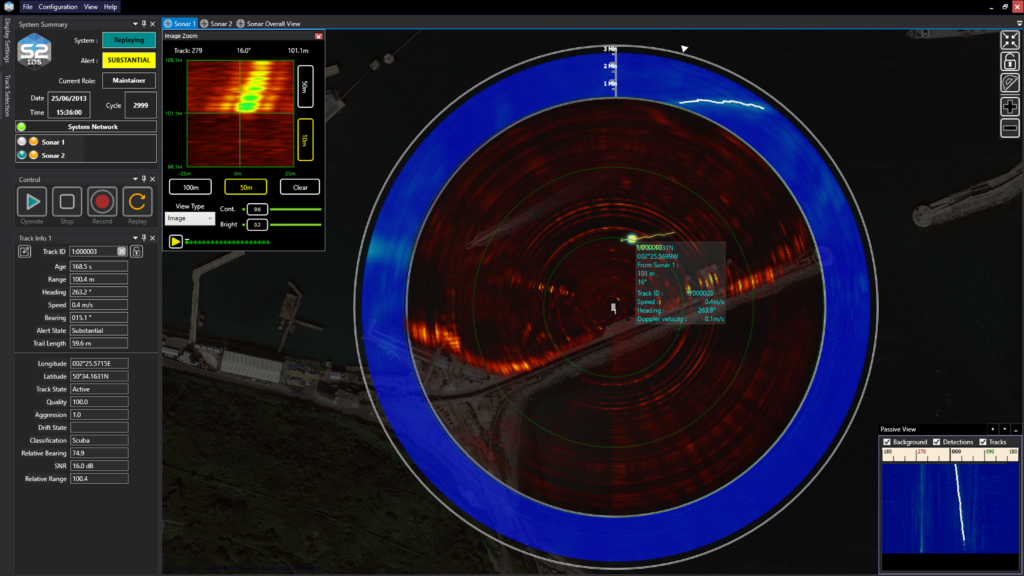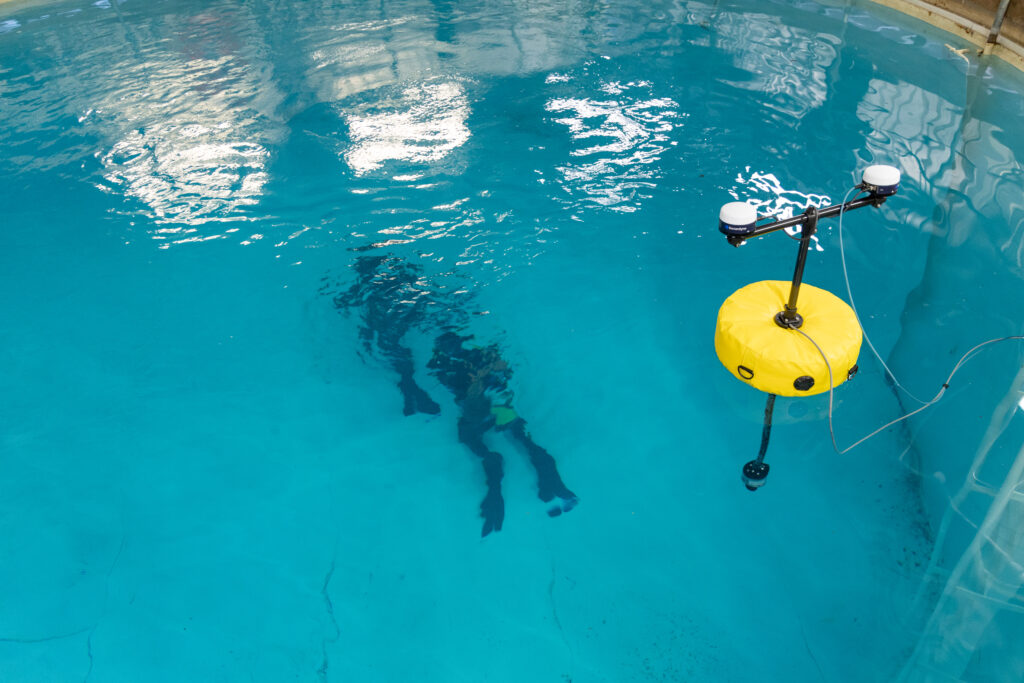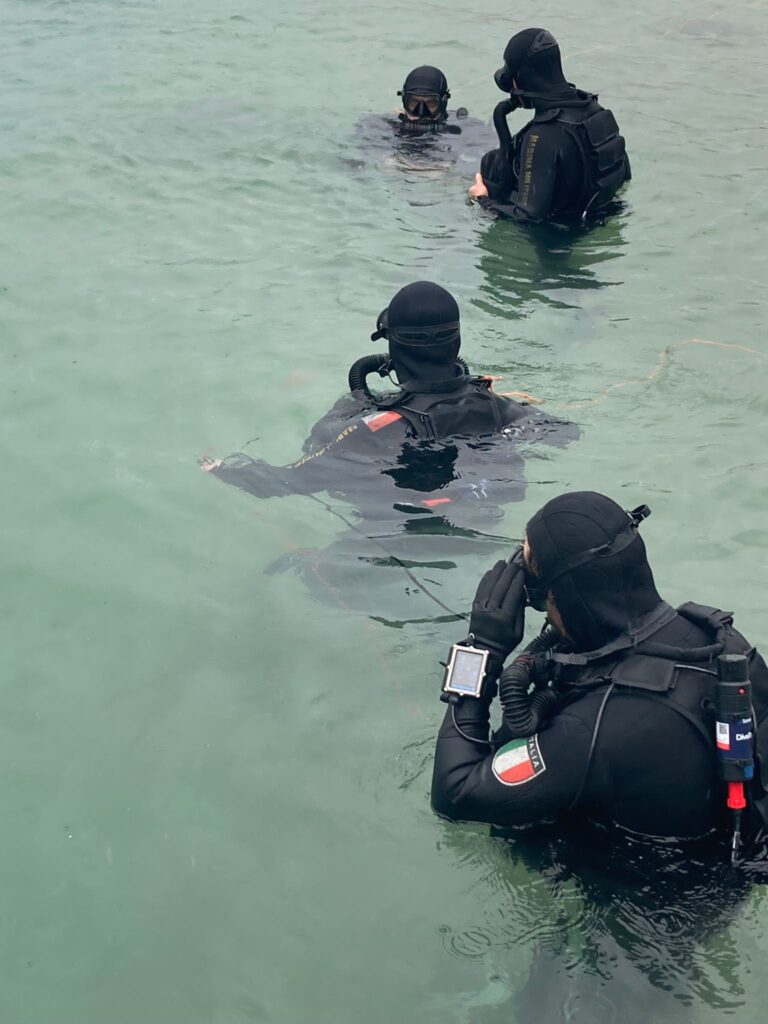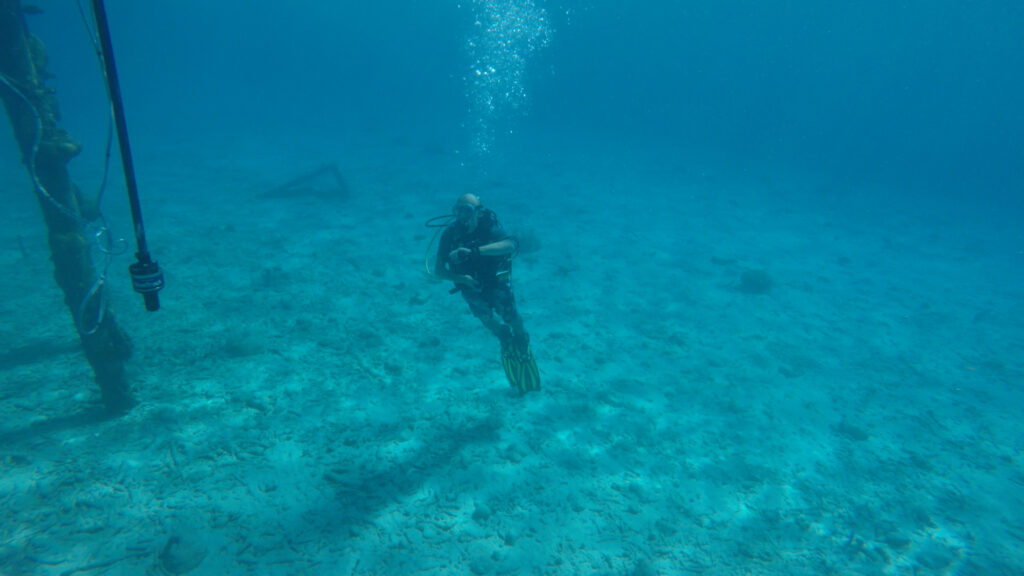Global maritime defence company Forcys has seen a significant surge in sales of Sentinel IDS®, the world’s leading Intruder Detection Sonar this year.
Sentinel, developed by Covelya Group technology partner Wavefront Systems, detects, tracks and classifies divers and uncrewed underwater vehicles (UUVs) approaching a protected asset from any direction and alerts security personnel to the threat.
It can be deployed on demand by expeditionary teams or installed permanently as part of a network of multiple sonar heads to provide underwater situational awareness.
Able to identify divers at ranges of up to 1,000 m and UUVs at 1,500 m, Sentinel takes reliable, long range underwater intruder detection to a new level and is used in defence, Critical National Infrastructure, vessel and VIP protection duties around the world.

Ioseba Tena, Forcys MD, commented; ”With tense security levels across much of the globe, increasing numbers of navies and defence organisations are relying on Sentinel to protect their assets. It’s no surprise that this year has seen our largest volume of Sentinel sales to date, and I am particularly proud that the Forcys teams across Australia, the UK and the US have played a significant part in achieving this. We are thrilled to continue to lead the way in protecting the world’s underwater spaces and grateful for our customer’s ongoing trust in our products and services.”
Sentinel protects assets that range from naval ports and vessels to other potential sabotage targets. As an example, Wavefront supplied Sentinel to protect the River Seine during the 2024 Paris Olympics opening ceremony, a demonstration of the level of confidence customers place in the system on the world stage.
In the final installment of the DiveTrack series of blogs, retired Royal Navy Cdr Justin Hains MBE focuses on safety and future use cases. If you want to learn more about our technology partner Sonardyne‘s latest product remember to get in touch with our team.
If you haven’t yet read the previous blog articles in the series then follow this link.
An extra layer of safety
Divers are very well trained, but humans make mistakes. Errors made in diving can have fatal consequences. With DiveTrack the supervisor is an extra layer of diving safety: they receive the alarms the diving set generates at the same time as the diver, they can see cylinder contents nearing minimum safe levels or in the case of rebreathers, if the gas the diver is breathing is unsafe. The supervisor can either change the plan or abort the dive before the situation becomes life-threatening. DiveTrack provides an additional layer to the equipment safety case and to the risk mitigation in place for the dive.
The ability to send automated and pre-formatted messages to and from the dive computer caps the safety enhancements delivered by DiveTrack. The basics include “Diver well” and “Reached target” while emergency calls include “I need assistance”, which provides a direction and range to all other divers on the net. The potential of the data transmission is only limited by the sensor routed to the computer: equipment parameters (gas compositions and CO2 scrubber monitoring) and biometrics (heart rate, respiration rate, core temperature) are all possible now if required by the customer.
Future proof
The DiveTrack system has capacity for future upgrades. The system is running at a fraction of its maximum capacity. This makes DiveTrack a safe choice for customers who are investigating biometric monitoring, experimental diving, performance enhancement and operational advantage or even for the key requirement of all diving equipment: safety.

DiveTrack is what I needed off Portland all those years ago. It enhances resilience and safety. The mission is more likely to succeed. This is proven technology adapted to a diving requirement from our Technology Partner Sonardyne: acknowledged and trusted experts in underwater acoustic tracking and communications. It has ample headroom for additional data exchange requirements in future. It is compact, neutrally buoyant in sea water, easy to use and reliable. It has been successfully integrated and demonstrated with closed circuit rebreathers and open circuit equipment.
Contact us today to discuss your requirements.
In the second of the DiveTrack series of blogs, retired Royal Navy Cdr Justin Hains MBE illustrates how divers can enhance their current operations through the intelligent use of underwater communications and tracking. Read on to find out how diving supervisors can be kept in the know with our technology partner Sonardyne‘s latest product.
If you haven’t yet read the first blog in the series then follow this link.
Enhanced Situational Awareness
DiveTrack from our technology partner Sonardyne shows the supervisor where the divers are by range, bearing and depth. This positional information can be georeferenced by GPS and displayed on a chart layer. The supervisor can also be provided near real-time cylinder pressures, equipment alarms or alerts. Future features will include gas analysis of the breathing loop (PPO2 or CO2 content for example) and biometric data. Better information supports better decision making.
The diver’s positions are constantly updated. This has two operational advantages: first, the divers know where they are with a high degree of accuracy without the need to surface – they remain covert. Second, the divers arrive on target having spent the minimum time in the water, in better shape for the assault or recce. Covert beach surveys can be completed accurately without the need for a floating GPS antenna attached to the diver or constantly resurfacing to ensure the snag-line survey is correctly positioned – no easy task in current and swell.
The supervisor can also see when a diver is using gas at an unexpectedly high rate that endangers the mission. They can see if a diver is ascending or worse descending unexpectedly: a significant danger on enriched oxygen equipment. Because the supervisor can implement changes to the plan based on enhanced situational awareness the mission is more likely to succeed. If the team can react to unforeseen events efficiently, rather than working through pre-planned responses without any more detail, the team is one step closer to the ‘hyper-enabled operators’ envisaged by United States Special Operations Command.
The result of improved situational awareness is more efficient insertion and extraction and greater confidence in the accuracy of any data collected.

Tactical Flexibility
“No plan stands first contact with the enemy” – or, in my experience, salt water. A covert dive to an offshore installation or a long-range insertion for beach reconnaissance both suffer from the same problem: there is no way of recalling the divers covertly without increased risk of detection on the surface. DiveTrack provides reliable through water communication via a selection of pre-formatted messages between supervisor and divers. In extremis, this could be an “abort mission” sent to all divers followed by a “return home” command which triggers a display of bearing and range information on the Shearwater Petrel dive computers and optional head up displays that will home them back to the dive boat, even as it moves.
But aborting the dive is the last resort. Far better is managing the mission dynamically. If the boat must move due to an enemy patrol, the beach recce team can be informed instantly. A “go to [new] waypoint” command can be sent by the supervisor at any time.
The system combines the accuracy of GPS with proven underwater acoustic ranging technology. But DiveTrack can still function in a GPS-denied battlespace. While the errors in navigation will increase over time, the relative positions of the dive boat and divers will remain accurate, and communications are unaffected. The mission can still proceed, reverting partially to previously used methods of visual sightings, but the benefits highlighted: enhanced situational awareness and tactical flexibility remain.
Want to know more?
In my next blog I will focus on the safety aspects of DiveTrack and how it has been built to be future proof. Keep an eye out for it.
In this blog retired Royal Navy Cdr Justin Hains MBE provides a personal view on the challenges he faced as a serving officer in charge of diving. These are common challenges faced by many dive supervisors and until recently there was not much that could be done to mitigate for them. Read on to discover how our technology partner Sonardyne‘s new DiveTrack product line will make diving more effective and safer.
It wasn’t that long ago
I remember sitting in a dive boat at night, wondering if my unmarked divers would arrive safely at the pick-up point off Portland. The issue was lack of through water communications, so I was constantly running the “what ifs”. What if the divers didn’t surface in the place and at the time planned? If I wanted to recall them: how would I know my message would reach them? My rescue diver had no realistic chance of finding a casualty underwater. Without an external clue the odds were worse than 400:1.
I needed better situational awareness delivered by three broad requirements: me knowing the location of the divers; me communicating with the divers and the divers being able to communicate with me. Finally, underpinning all of this, in a worst-case scenario, I also wanted to send the rescue diver directly to a casualty without potentially fruitless and time-consuming underwater searches.
The technology that was missing all those years ago was reliable diver tracking and through water communications. Early solutions struggled with background noise and distortion, were limited to voice communications, and while solving the communications problem over reasonable distances did not provide accurate positional information to both diver and rescue boat.
Our technology partner Sonardyne’s DiveTrack provides a reliable answer to these core requirements with headroom for additional data exchange requirements in future. It is compact, neutrally buoyant in sea water, easy to use and reliable. It has been integrated with rebreathers and open circuit equipment. This is proven technology with application across all military diving from the experts in underwater acoustic tracking and communications.
The system has a low probability of intercept, and its encryption keeps transmissions secure. While there is a small chance of detection by a smaller group of adversaries the tactical advantage of having clear communications outweighs the small risk of real-time detection and exploitation.

Want to know more?
Follow this link to read my next blog on this subject, where I will discuss how DiveTrack provides safety, operational advantage and a greater probability of mission success. The combination of improved situational awareness, even in a GPS denied environment, and the reliability of communications and positioning provide an unprecedented level of tactical flexibility in a range of operational scenarios. The risk of detection and exploitation of the encrypted signals is easily outweighed by the operational advantages of the system. Finally, should the worse happen and a diver requires assistance: the rescue diver or other divers nearby can home onto the position. The rescue diver will find the casualty.
